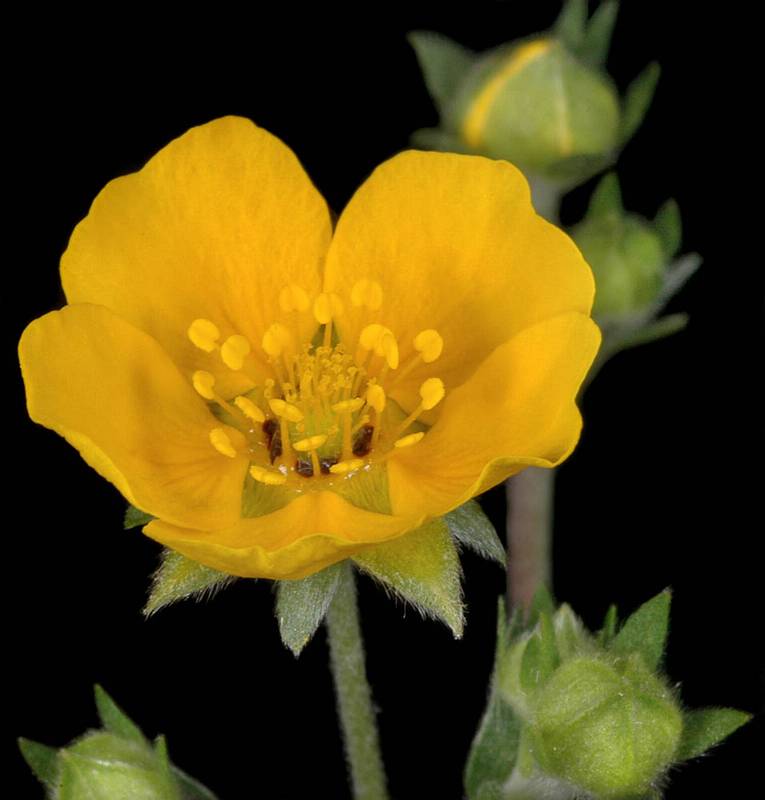Potentilla breweri
Potentilla norvegica
Brewer's cinquefoil
Norwegian cinquefoil, rough cinquefoil
Basal leaves pinnate, the leaflets 9-11, crowded, broadly obovate with a wedge-shaped base, 1-2 cm. long, cleft more that halfway to the midvein into linear divisions;
stipules ovate, 0.5-1.5 cm. long;
cauline leaves 2-3, greatly reduced.
Leaves alternate, mainly cauline;
stipules well-developed, ovate, usually strongly toothed;
leaflets usually 3, broadly ovate to obovate below to narrowly oblong above, 3-6 cm. long, serrate with rounded teeth, pubescent.
Inflorescence an open, several-flowered cyme;
calyx sericeous, cup-shaped, up to 1.5 cm. broad in fruit, the 5 lobes lanceolate, interspersed with 5 linear, smaller bracteoles;
petals 5, yellow, obcordate, exceeding the sepals;
stamens 20;
pistils numerous;
style slender, sub-apical.
Inflorescence a rather compact cyme with a long peduncle;
calyx 7-11 mm. broad, the 5 sepals broadly lanceolate, erect, the 5 bracteoles lanceolate and about equal in length to the sepals;
petals yellow, broadly obovate, slightly shorter than the sepals;
stamens usually 20;
pistils numerous;
style terminal, thickened basally.
Achene smooth, greenish, 1.3 mm. long.
Achenes light brown, 1.0-1.3 mm. long ovate, flattened.
Potentilla breweri
Potentilla norvegica
- Local floras:
CA,
OR,
WA
- Local Web sites:
CalFlora,
CalPhotos,
Flora NW,
PNW Herbaria
WildflowerSearch
iNaturalist (observations)
USDA Plants Database
- LBJ Wildflower Center
- SEINet
- Plants of the World Online
- Encyclopedia of Life
- Wikipedia
- Google Image Search
- Local floras:
BC,
CA,
OR,
WA
- Local Web sites:
CalFlora,
CalPhotos,
Flora NW,
PNW Herbaria
WildflowerSearch
iNaturalist (observations)
USDA Plants Database
- LBJ Wildflower Center
- SEINet
- Plants of the World Online
- Encyclopedia of Life
- Wikipedia
- Google Image Search



